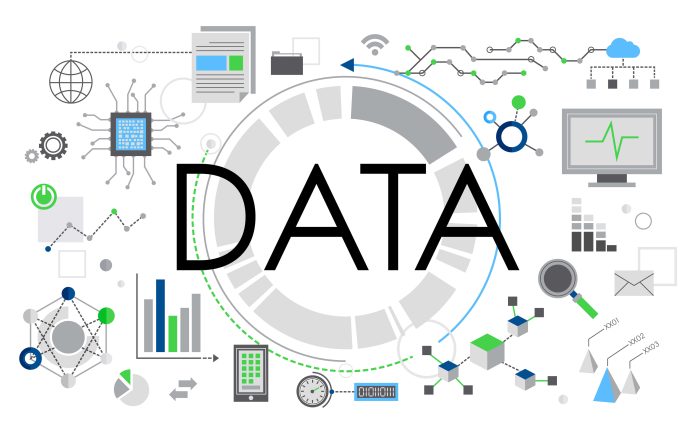“Data is the new oil.” – UK mathematician and Tesco Clubcard architect Clive Humby. The phrase is more relevant than ever in the digital age, particularly for B2B businesses. Data sourcing has emerged as a key component for companies seeking a competitive edge through well-informed decision-making and focused strategies.
Let’s explore the definition of data sourcing, its advantages for business-to-business (B2B) transactions, data collection techniques, and practical applications of data sourcing.
What is Data Sourcing?
Data sourcing refers to the process of identifying, gathering, and managing data from various internal and external sources. In a B2B context, it involves collecting data about potential clients, market trends, competitor activities, and other relevant business intelligence that can inform and enhance business operations.
This data can come from a variety of sources, including online databases, social media, government records, and proprietary research.
Types of Data Sourcing
1# Primary Data Sourcing:
This involves collecting original data directly from the source. Methods include surveys, interviews, and direct observations.
2# Secondary Data Sourcing:
This involves gathering existing data from previously conducted studies, reports, and other publications. Secondary sources can provide valuable insights without the need for extensive primary data collection.
What are the Benefits of Data Sourcing in B2B?
1# Improved Decision-Making
Access to accurate and comprehensive data enables businesses to make informed decisions, reducing the risks associated with uncertainties.
For instance, data on market trends and customer preferences can guide product development and marketing strategies, ensuring they align with current demands and future forecasts.
2# Enhanced Targeting
With detailed data, companies can better understand their target audience, leading to more effective marketing campaigns and higher conversion rates.
Understanding the demographics, behavior, and preferences of potential clients allows businesses to tailor their messages and offers, increasing the likelihood of engagement and sales.
3# Increased Efficiency
Data-driven insights can streamline operations, optimize resource allocation, and improve overall efficiency.
For example, data on supply chain performance can highlight bottlenecks and inefficiencies, allowing companies to address issues promptly and improve their processes.
4# Competitive Advantage
Staying informed about market trends and competitor activities helps businesses stay ahead in the competitive landscape. Businesses can identify opportunities for differentiation and innovation by monitoring competitors’ strategies and performance.
5# Personalization
Data allows for more personalized interactions with clients, fostering stronger relationships and increasing customer loyalty. Personalized marketing and sales approaches can significantly enhance customer experience, leading to higher satisfaction and retention rates.
How Do You Collect B2B Data?
Collecting B2B data involves multiple methods, each suited to different types of information and sources.
1# Web Scraping
Web scraping involves extracting data from websites using automated tools. This method is particularly useful for gathering information on competitors, market trends, and potential leads. Tools like Scrapy and Beautiful Soup are commonly used for web scraping.
2# Surveys and Questionnaires
Directly obtaining data from target audiences through structured queries can provide valuable insights. Surveys and questionnaires can be distributed via email, social media, or embedded on websites to collect feedback on products, services, and customer preferences.
3# Social Media Monitoring
Analyzing social media platforms for insights into customer behavior and market sentiments is another effective method. Tools like Hootsuite and Brandwatch can monitor conversations and trends on social media, providing real-time data on industry buzz and customer opinions.
4# Third-Party Data Providers
Purchasing data from specialized companies that offer comprehensive datasets relevant to your industry can save time and resources. Companies like ZoomInfo and Dun & Bradstreet provide extensive B2B data that can enhance market research and lead generation efforts.
5# CRM Systems
Leveraging Customer Relationship Management (CRM) systems to collect and manage customer data is crucial for maintaining organized and actionable information. CRM tools like Salesforce and HubSpot offer analytics and reporting features that provide insights into customer interactions and sales performance.
6# Public Records
Utilizing publicly available data sources such as government databases and industry reports can supplement your data collection efforts. These sources often contain valuable information on market statistics, economic indicators, and regulatory developments.
B2B Data Sourcing Examples
1# Market Research Firms
B2B companies can leverage data reports and in-depth market analysis from companies like Gartner and Forrester to help with their strategic planning. Their reports provide insights into competitive landscapes, industry trends, and new technologies across a range of industries.
2# Social Listening Tools
Tools like Hootsuite and Brandwatch help monitor social media conversations, providing valuable insights into industry trends and customer opinions. These tools can track brand mentions, hashtags, and keywords, helping businesses stay attuned to market sentiments.
3# Email Marketing Platforms
Email campaign engagement data is gathered by services like Mailchimp and HubSpot, which aids companies in improving their communication tactics. With the help of these systems’ data on open rates, click-through rates, and subscriber behavior, email marketing may be more focused and successful.
4# CRM Analytics
Better client management and decision-making are made possible by the enhanced analytics on sales and customer interaction data provided by Salesforce and Microsoft Dynamics. Comprehensive data on sales success, client preferences, and industry trends can be produced by these CRM systems.
Conclusion
Data sourcing is crucial for B2B companies to thrive in a data-driven world. Accurate and comprehensive data enhances decision-making, improves targeting, and provides a competitive advantage. Implementing effective data-sourcing strategies ensures sustainable growth and success in the B2B market.







